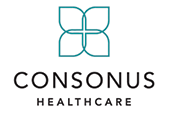The safety of nurses from workplace-induced injuries and illnesses is important to nurses themselves, as well as the patients they serve. Here are a few tips.
Standard Precautions
- Hand hygiene.
- Use of personal protective equipment (e.g., gloves, masks, eyewear).
- Respiratory hygiene / cough etiquette.
- Sharps safety (engineering and work practice controls).
- Safe injection practices (i.e., aseptic technique for parenteral medications).
- Sterile instruments and devices.
Safe Patient Handling
A common nursing safety issue is patient handling and patient transfer. Some patients may not be able to assist. When you couple this with the obesity epidemic and unsafe staffing ratios, the situation is ripe for nursing injuries. If your workplace doesn’t have them already, advocate for lifts and transfer devices to ensure patient and nurse safety. If you’re lucky enough to have them, utilize them. It may take a little longer to get the patient in the sling, but it’s still quicker than battling for a workman’s comp claim when you herniate every disc in your back.
Repetitive Motion Injury Prevention
You’re only given one body, so use it well. Another aspect of nursing safety is preventing repetitive motion injuries. Invest in quality shoes. Consider having multiple pairs and rotate them to give the foam insoles a chance to recover; they’ll break down more slowly. Wear compression socks or stockings when you work. Your feet, legs and the rest of your body will thank you at the end of each day. If you notice your feet (or knee or hip or back, etc.) are regularly causing pain at the end of each shift, go see a doctor. It’s far better to manage any injuries that occur earlier than to let them fester or develop into a huge problem.
Practicing precautions can help keep everyone safe!
Questions regarding LeadingAge Washington’s Group Retro program, contact:
- Scott DeHem, Vice President of Claims, Comprehensive Risk Management/Risk Finance, scott@riskfinance.net
- Pat Sylvia, LeadingAge WA Staff, PSylvia@LeadingAgeWA.org




